Japan, a land of ancient traditions and modern innovations, boasts a rich architectural heritage that has captivated the world for centuries. Rooted in its unique cultural, religious, and historical influences, Japanese architecture is characterized by its simplicity, harmony with nature, and meticulous attention to detail.
Japanese architecture finds its origins in the country’s indigenous cultures, notably Shinto and Buddhism. Shinto and Buddhist infused Japans architecture with spiritual significance and a deep connection to nature. Shintoism, the indigenous animistic belief system of Japan, emphasizes the reverence of kami, spirits dwelling in natural elements. Shinto architecture, notably seen in shrines, embodies this spiritual connection, featuring wooden structures with distinctive curved roofs, chigi, and katsuogi, symbolizing the presence of kami and harmonizing with the surrounding environment.
Buddhist influence, introduced to Japan from China and Korea, brought elements such as temples, pagodas, and meditation halls. These structures showcase intricate wooden carvings and emphasize balance and symmetry, reflecting Buddhist principles of enlightenment and inner harmony. Both Shinto and Buddhist architectural styles intertwine seamlessly, creating a unique blend that characterizes Japanese buildings, harmonizing the spiritual with the tangible, and exemplifying the nation’s cultural and religious heritage.
Simplicity and minimalism lie at the heart of Japanese architecture, defining its aesthetic essence and creating spaces of unparalleled elegance. This design philosophy emphasizes the elimination of unnecessary elements, focusing on the fundamental and essential aspects of a structure, uncluttered and serene, allowing occupants to experience a profound sense of tranquility and mindfulness.

Shinto, Buddhism and the Japanese belief system. Courtesy of Travel to Japan.
One of the prominent architects in Japan, and the world, renowned for specializing in simplicity and minimalism is Tadao Ando. His work often features clean lines, geometric shapes, and the innovative use of materials, especially concrete. Ando’s designs emphasize natural light, creating serene and contemplative spaces that evoke a sense of harmony and tranquility.
One of his notable projects that exemplifies his minimalist approach is the Church of the Light in Osaka, Japan. This iconic structure features a simple rectangular form with a large cross-shaped cutout on the façade, allowing natural light to filter into the interior. The play of light and shadow enhances the spiritual atmosphere of the space, showcasing Ando’s mastery in utilizing minimal elements to create a profound impact.
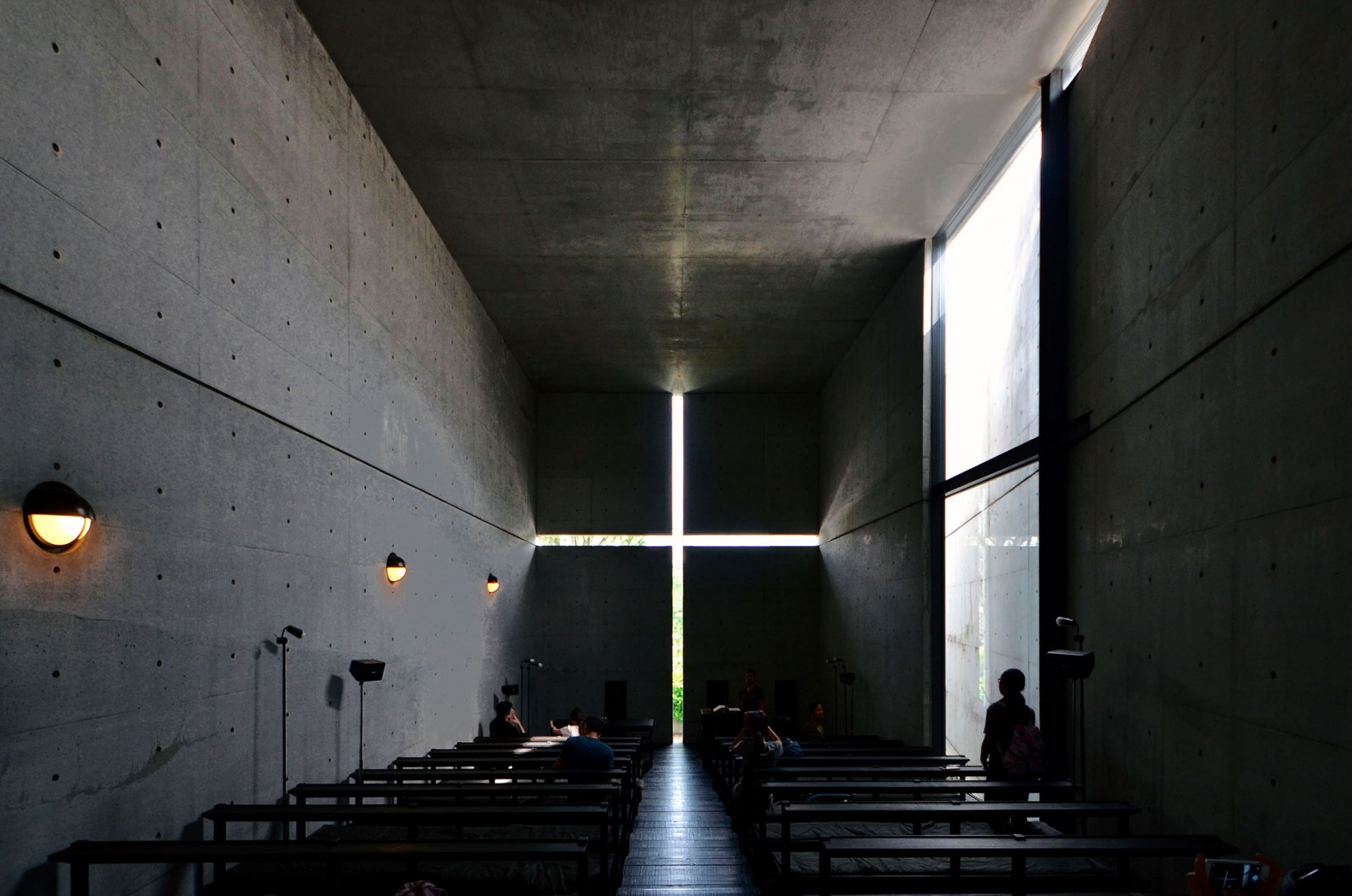
Church of Light, Osaka, Japan. Courtesy of Metalocus, Gonzalo García Moreno.
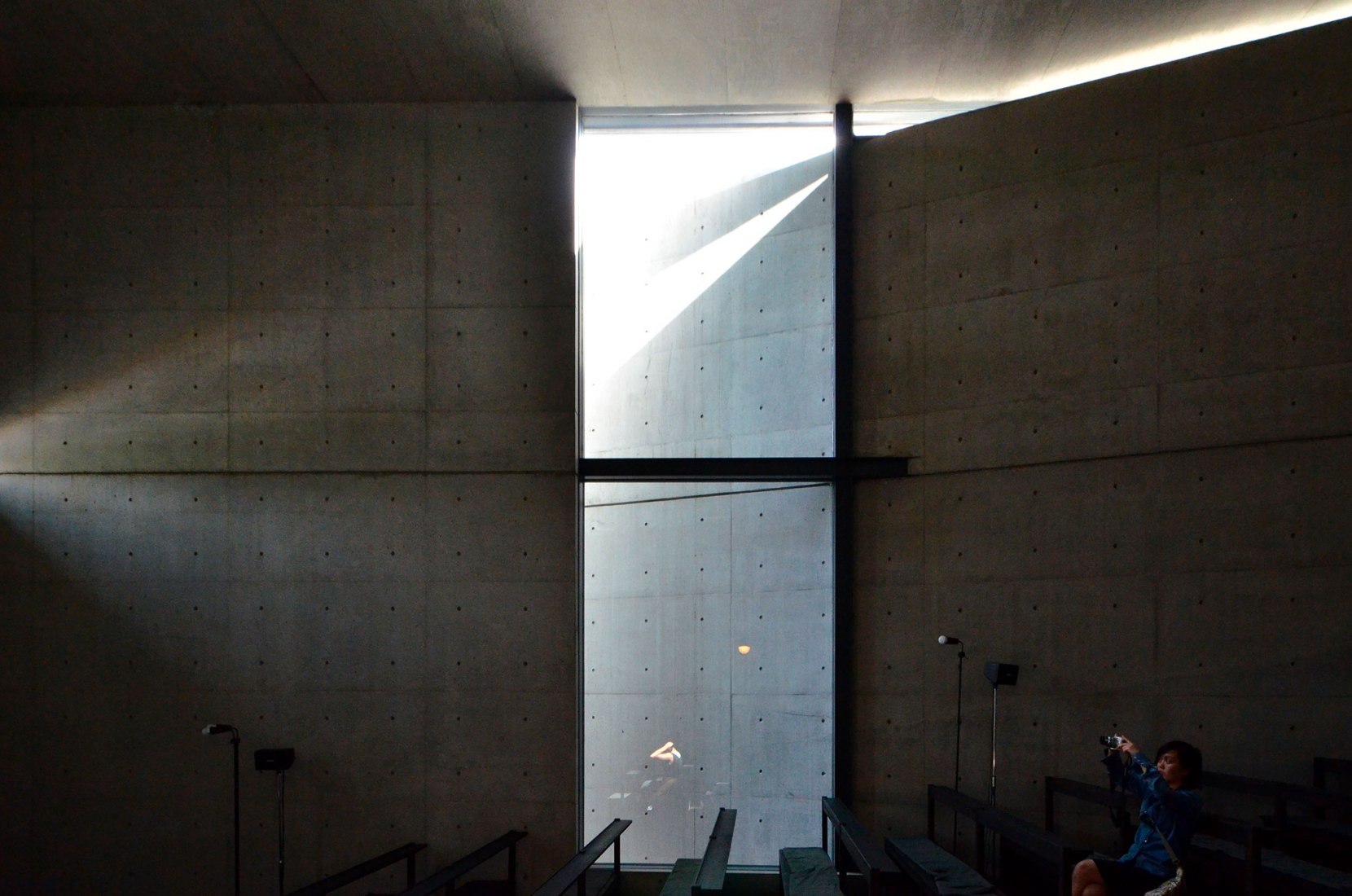
Church of Light, Osaka, Japan. Courtesy of Metalocus, Gonzalo García Moreno.
Nature also plays a pivotal role in Japanese architecture, blurring the boundaries between indoor and outdoor spaces creating a harmony with Mother Nature. Traditional Japanese gardens, with their meticulously arranged rocks, water features, and plants, are designed to evoke a sense of harmony, inviting contemplation and peace.
Kengo Kuma specializes in creating designs that harmonize seamlessly with nature. His architectural philosophy emphasizes a deep connection between the built environment and the natural world, reflecting the traditional Japanese concept of “symbiosis with nature.” Kuma’s works often incorporate organic shapes, natural materials, and innovative techniques to create buildings that blend harmoniously into their surroundings.
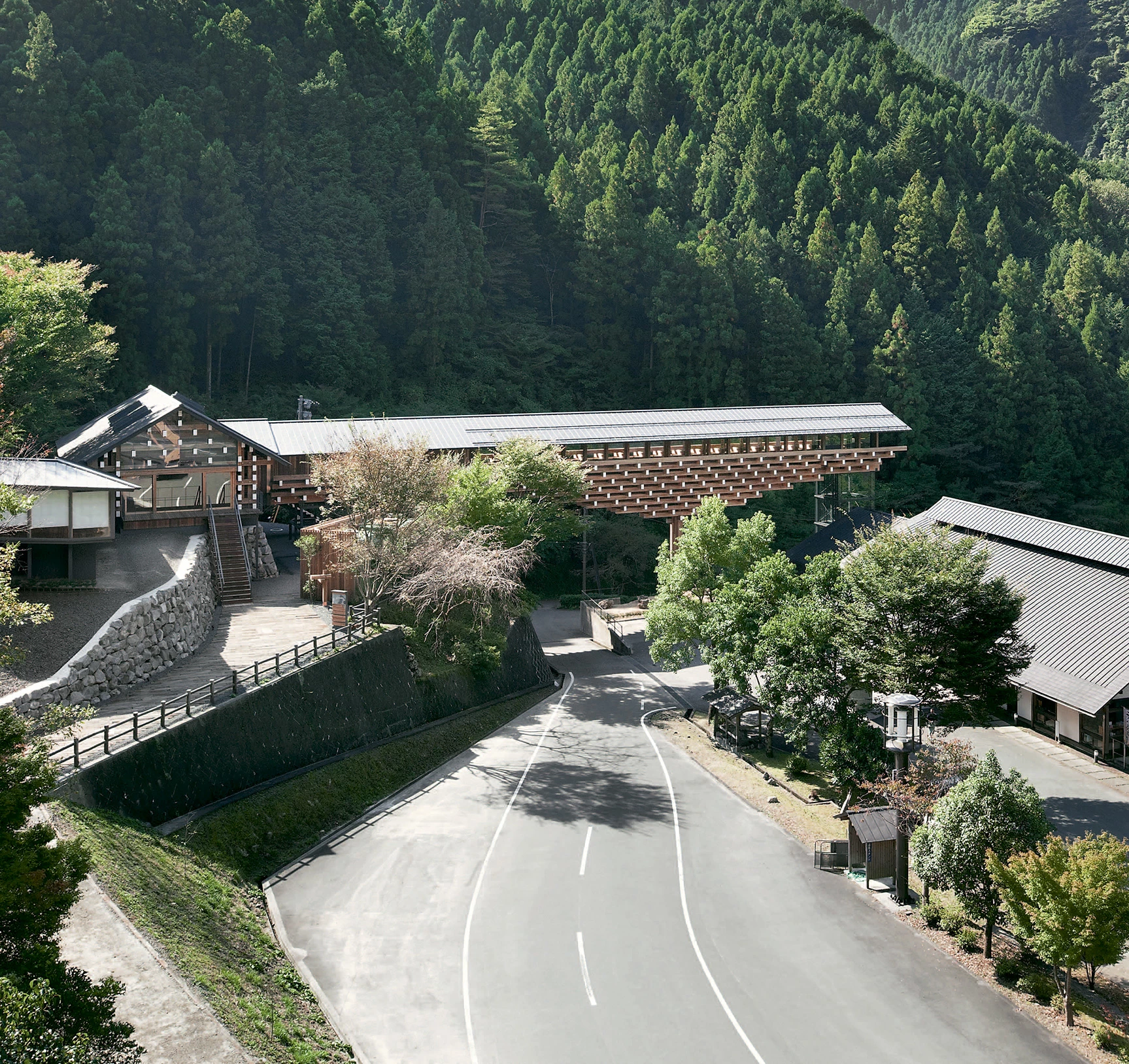
Yusuhara Wooden Bridge Museum, Yusuhara, Japan. Courtesy of Takumi Ota
The Yusuhara Wooden Bridge Museum, located in Kochi Prefecture, Japan, is a notable example of Kengo Kuma’s approach to architecture that incorporates nature harmoniously and sustainably. This museum is primarily constructed with local cedar wood, which not only reflects the rich tradition of Japanese carpentry but also establishes a deep connection with the surrounding natural environment. The museum’s structure mimics the shape of a wooden bridge, seamlessly blending with the mountainous landscape and the surrounding forests.
Kuma’s commitment to preserving the environment and creating architecture that resonates with nature has earned him international acclaim. His innovative designs continue to inspire architects and urban planners globally, making him a leading figure in the promotion of harmony between architectural spaces and the natural environment.
Wooden structures and craftsmanship occupy a central place in the rich tapestry of Japanese architecture, reflecting the nation’s historical reliance on timber as a primary building material. Japanese architects and craftsmen have perfected traditional woodworking techniques, showcasing an unparalleled level of precision and artistry. The intricate joinery methods, such as “miyadaiku” and “sashimono,” emphasize the seamless integration of wooden components, ensuring both structural stability and aesthetic beauty.
This deep-rooted craftsmanship extends beyond structural elements, encompassing the creation of sliding doors (“fusuma”), intricate lattice work (“kumiko”), and ornate carvings that adorn temples and shrines. Wood, with its warmth and versatility, not only provides the framework for architectural marvels but also serves as a canvas for artistic expression. The meticulous attention to detail and reverence for the natural grain of wood contribute to the unique character of Japanese buildings, making wooden structures and craftsmanship a hallmark of the country’s architectural heritage, appreciated and admired both locally and internationally.
Kazuyo Sejima and Ryue Nishizawa, the architects behind the renowned architectural firm SANAA, are known for their innovative approach to design and their ability to create ethereal, almost weightless structures. While their portfolio includes a diverse range of materials, they have occasionally incorporated timber into their projects, albeit sparingly, to achieve specific aesthetic and functional goals.
One notable project where Sejima and Nishizawa incorporated timber is the “Garden & House” in Tokyo, completed in 2014. In this project, they used timber to create a sense of warmth and intimacy within the residence. The use of wooden elements, such as beams and flooring, contrasts with the minimalist white surfaces, creating a harmonious balance between the natural material and the modern architectural space. The timber accents serve to soften the overall atmosphere, providing a comforting environment for the occupants while emphasizing the duo’s mastery of integrating traditional elements into contemporary designs.

Garden and House, in Tokyo, Japan. Courtesy of Iwan Baan.
Other renowned worth mentioning, Shigeru Ban is celebrated for his innovative and humanitarian approach to architecture. He is widely recognized for his inventive use of sustainable materials, particularly cardboard tubes, in creating temporary and permanent structures. Ban gained international acclaim for his disaster relief work, designing emergency shelters using easily accessible materials like cardboard and paper tubes. His remarkable designs have provided safe and efficient housing solutions for people affected by natural disasters, including earthquakes and tsunamis.
Beyond his humanitarian efforts, Ban’s portfolio includes a diverse range of projects, from museums and residential buildings to commercial spaces, all marked by his emphasis on environmental consciousness and elegant simplicity. His work reflects a deep commitment to social responsibility and sustainable design, making him a trailblazer in the field of architecture and a true advocate for the power of innovative thinking in addressing global challenges.

Takatori Catholic Church, Kobe, Japan. Courtesy of 50 for 50 World
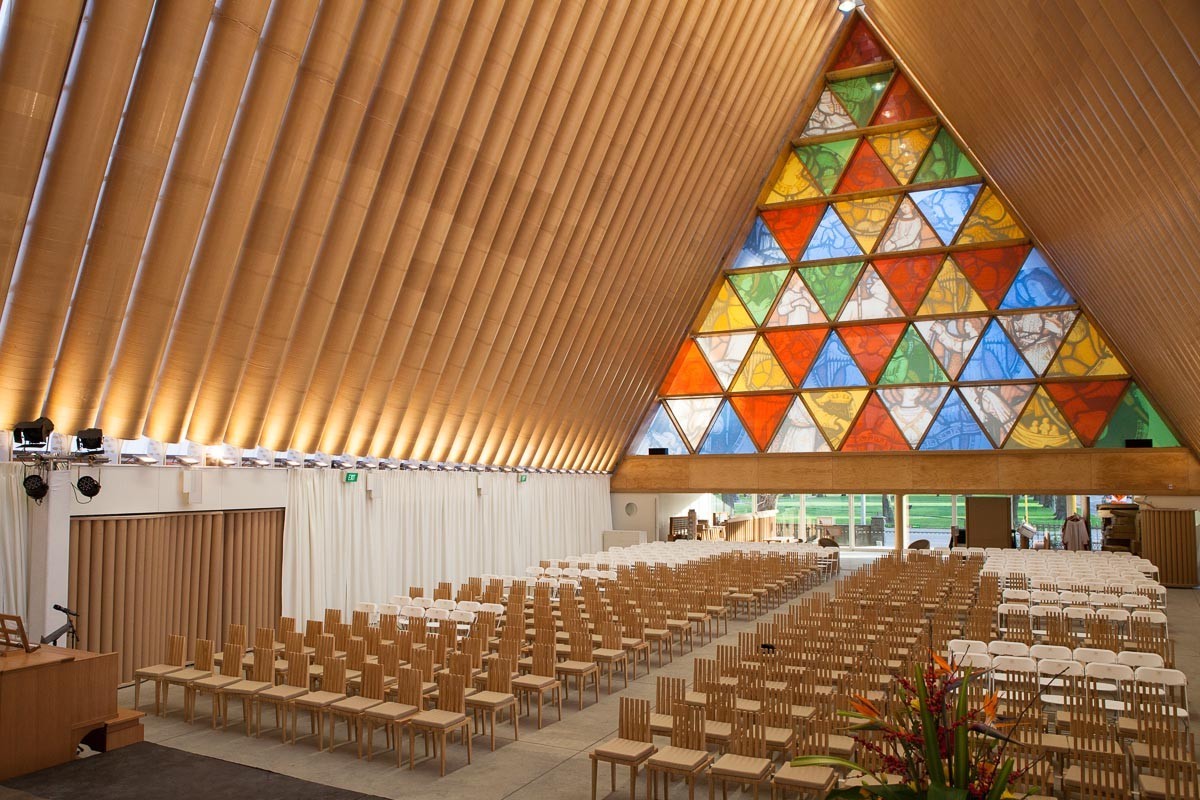
Cardboard Cathedral, Christchurch, New Zealand. Courtesy of Bridgit Anderson.
Japanese architecture, with its deep-rooted traditions and innovative spirit, continues to inspire architects and enthusiasts worldwide. From the sacred serenity of Shinto shrines to the visionary creations of contemporary architects like Tadao Ando and Kengo Kuma, Japan’s architectural heritage stands as a testament to the harmonious coexistence of tradition and innovation. As we marvel at the timeless beauty of Japanese architecture, we are reminded of its enduring influence and the boundless possibilities it offers for the future of architectural design.
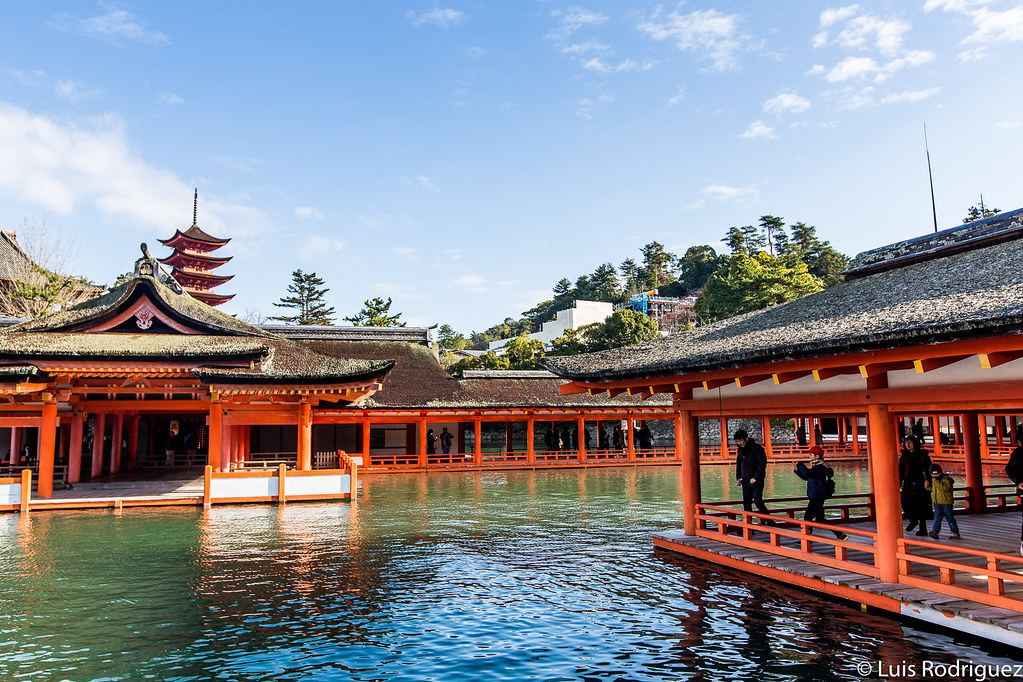
Itsukushima Shrine in Miyajima, Japan
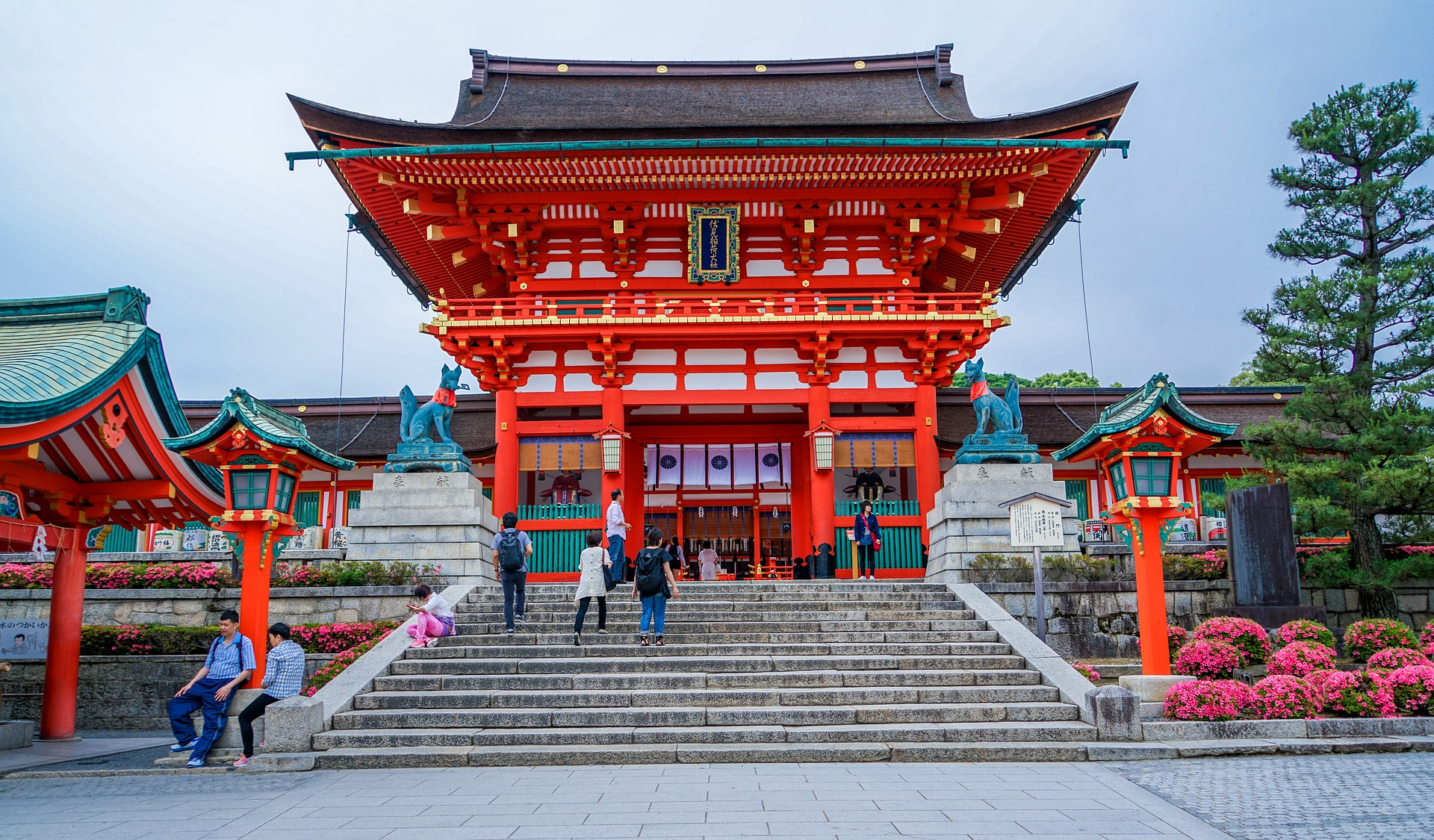
Fushimi Inari Taisha Shrine in Kyoto, Japan




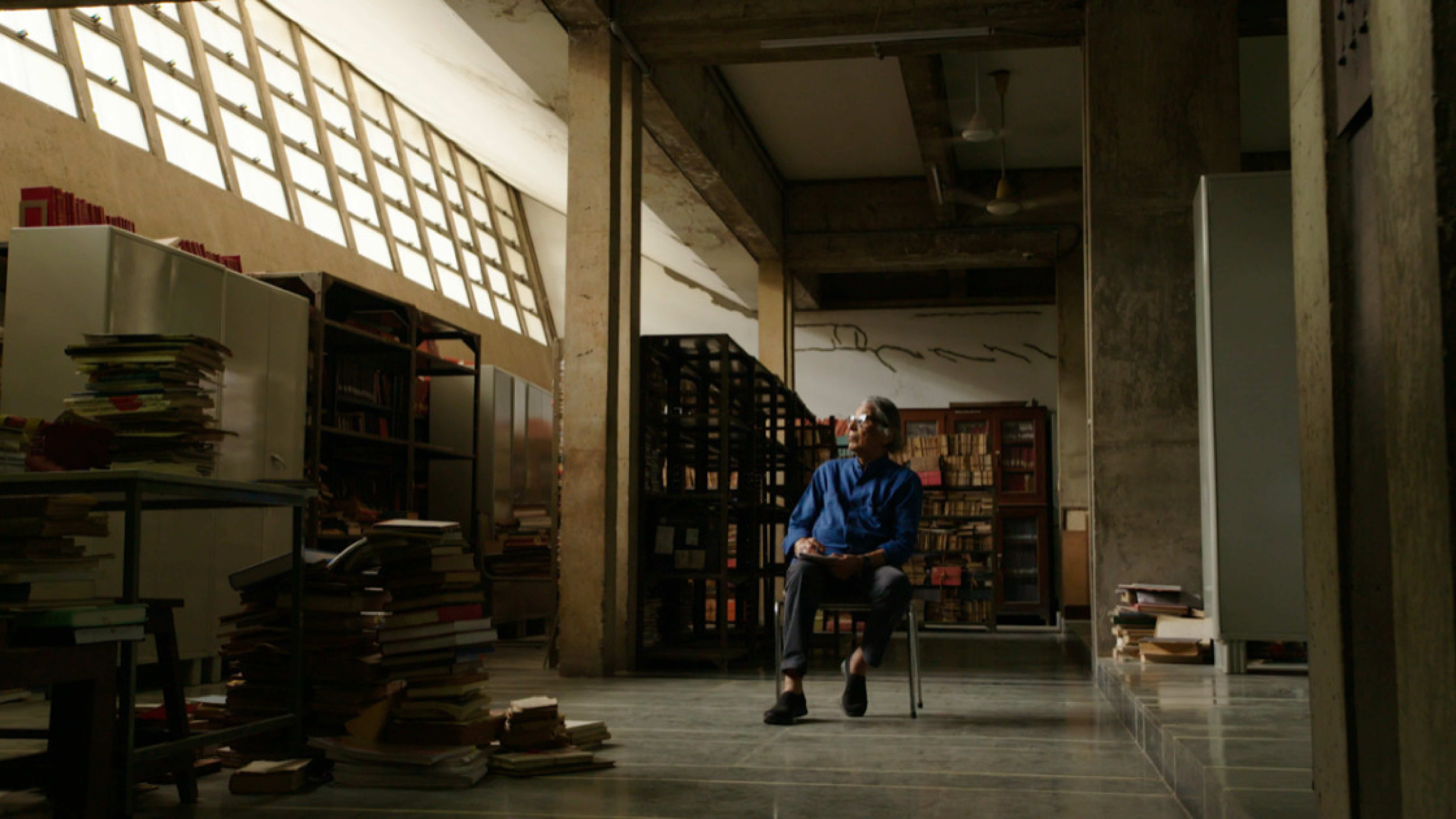
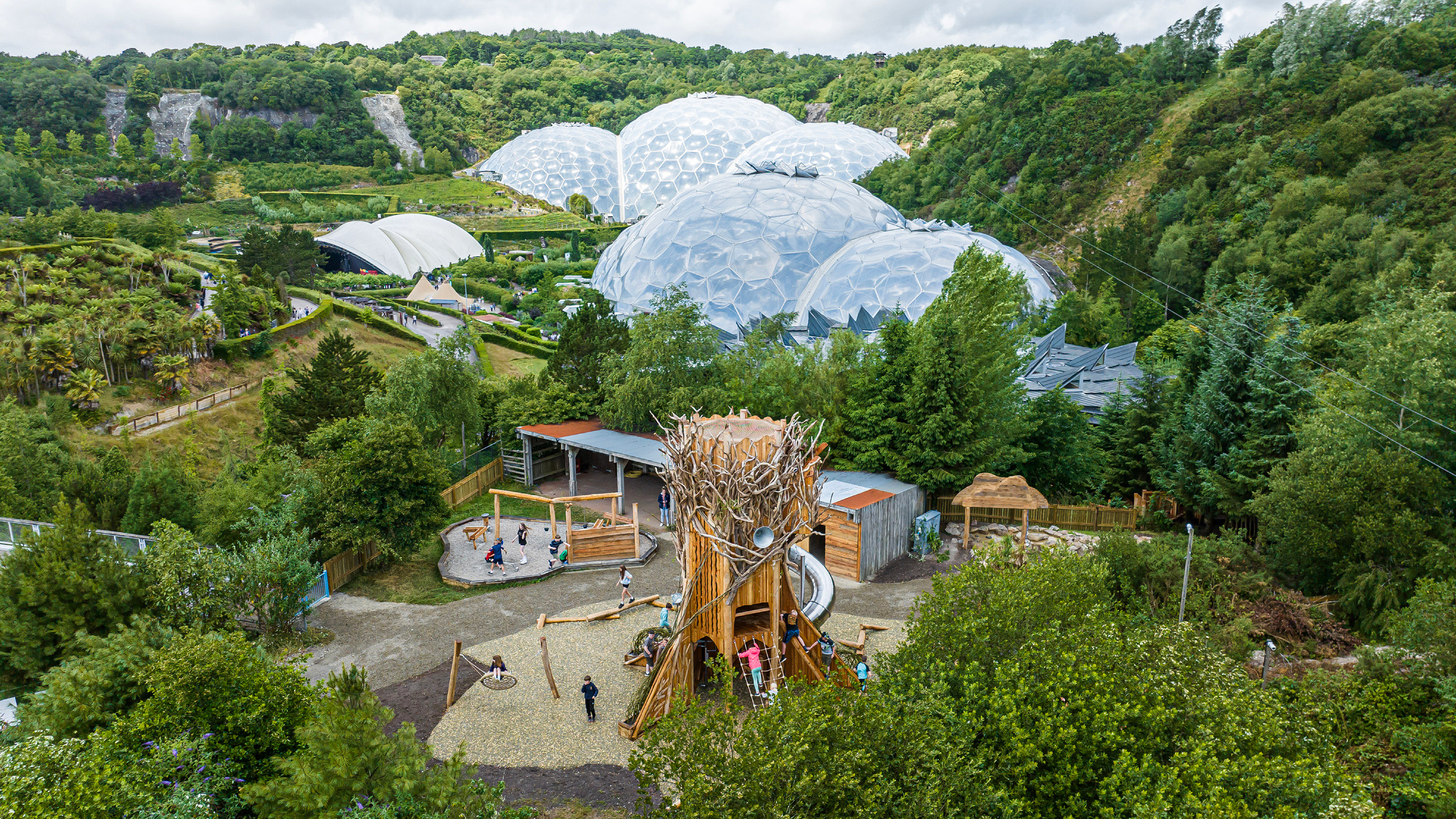

Leave A Comment